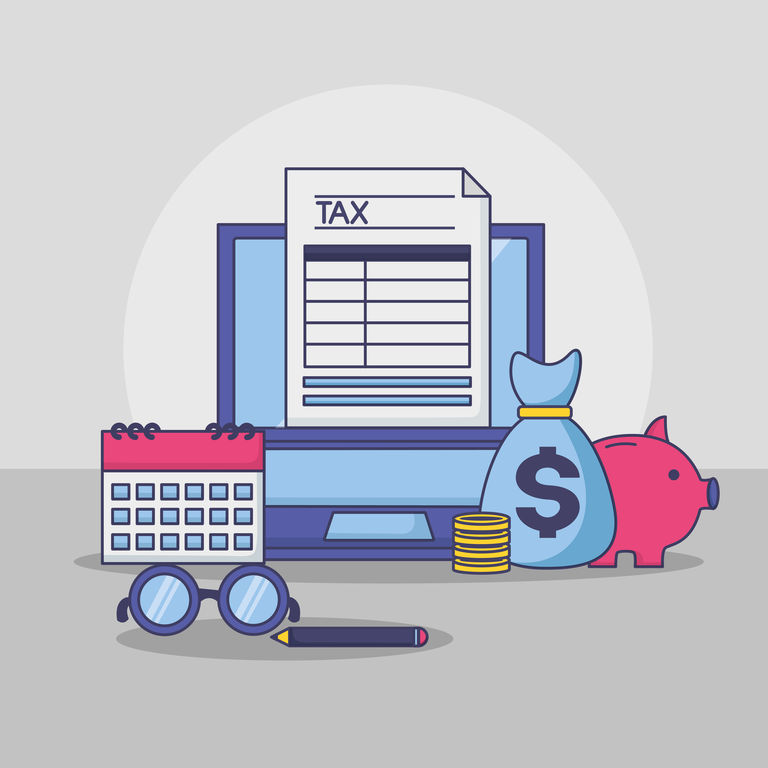
In today’s fast-paced business world, efficiency is key. Companies are constantly looking for ways to streamline their operations, reduce manual work, and improve accuracy. One area where this is particularly important is invoicing. With the rise of digital technologies, eInvoicing has become increasingly popular, offering businesses a way to automate and simplify their invoicing processes. Two powerful tools that have emerged in this space are ClearTax and NetSuite. When integrated, these platforms offer a robust solution for businesses looking to optimize their eInvoicing workflows.
Understanding eInvoicing
Before we dive into the specifics of ClearTax and NetSuite integration, let’s take a moment to understand what eInvoicing is and why it’s important. eInvoicing, or electronic invoicing, is the process of creating, sending, and storing invoices digitally. This eliminates the need for paper-based invoices and manual data entry, reducing errors and saving time.
eInvoicing offers numerous benefits for businesses of all sizes. It speeds up the invoicing process, reduces costs associated with printing and mailing paper invoices, and improves cash flow by enabling faster payments. Moreover, it provides better visibility into the invoicing process, making it easier to track and manage invoices.
The shift towards eInvoicing isn’t just a matter of convenience; it’s becoming a necessity in many parts of the world. Governments are increasingly mandating eInvoicing for businesses, particularly for B2G (Business to Government) transactions. This trend is likely to continue, making it crucial for businesses to adopt eInvoicing solutions sooner rather than later.
Introduction to ClearTax and NetSuite
ClearTax is a leading provider of eInvoicing solutions in India. It offers a comprehensive platform that helps businesses comply with GST regulations and streamline their invoicing processes. ClearTax’s eInvoicing software is designed to make it easy for businesses to generate, validate, and send eInvoices that meet all regulatory requirements.
One of the key strengths of ClearTax is its deep understanding of the Indian tax system and regulatory environment. This expertise is baked into their software, ensuring that businesses using ClearTax can stay compliant with the latest GST rules and regulations. ClearTax also offers regular updates to its platform, keeping pace with the frequent changes in tax laws and eInvoicing requirements.
NetSuite, on the other hand, is a cloud-based ERP (Enterprise Resource Planning) system that provides a suite of integrated applications to help businesses manage their core processes. NetSuite offers a range of features, including financial management, inventory management, and customer relationship management. It’s widely used by businesses of all sizes across various industries.
What sets NetSuite apart is its flexibility and scalability. Whether you’re a small business just starting out or a large enterprise with complex needs, NetSuite can be customized to fit your specific requirements. Its cloud-based nature also means that businesses can access their data and run their operations from anywhere, at any time.
The Power of Integration
While both ClearTax and NetSuite are powerful tools in their own right, their true potential is realized when they’re integrated. The ClearTax NetSuite integration brings together the best of both worlds, combining NetSuite’s robust ERP capabilities with ClearTax’s specialized eInvoicing features.
This integration allows businesses to seamlessly generate eInvoices directly from their NetSuite ERP system. Instead of manually inputting data into ClearTax, the integration automatically pulls relevant information from NetSuite, reducing the risk of errors and saving valuable time.
But the benefits go beyond just automating data transfer. The integration creates a seamless workflow that spans across both platforms. For instance, when an invoice is generated in NetSuite, it’s automatically sent to ClearTax for validation and processing. Once processed, the status of the invoice is updated in NetSuite, providing real-time visibility into the invoicing process.
Benefits of ClearTax and NetSuite Integration
The integration of ClearTax and NetSuite offers numerous benefits for businesses:
- Automated eInvoicing: With the integration, businesses can automate their entire eInvoicing process. When an invoice is created in NetSuite, it’s automatically sent to ClearTax for processing and validation. This eliminates the need for manual data entry and reduces the risk of errors.
- Improved Compliance: ClearTax ensures that all eInvoices generated comply with the latest GST regulations. By integrating ClearTax with NetSuite, businesses can be confident that their invoices are always compliant, reducing the risk of penalties and fines.
- Real-time Synchronization: The integration enables real-time synchronization between NetSuite and ClearTax. This means that any changes made in NetSuite are immediately reflected in ClearTax, ensuring that both systems always have the most up-to-date information.
- Enhanced Efficiency: By streamlining the eInvoicing process, the integration significantly improves efficiency. It reduces the time spent on invoicing tasks, allowing employees to focus on more strategic activities.
- Better Visibility: The integration provides better visibility into the invoicing process. Businesses can easily track the status of their invoices, from generation to payment, all within their NetSuite system.
- Cost Savings: By automating the eInvoicing process and reducing manual work, the integration helps businesses save on operational costs. This includes savings on paper, printing, and postage, as well as the labor costs associated with manual invoicing.
- Improved Cash Flow: Faster invoicing and payment processing can lead to improved cash flow for businesses. By reducing the time between service delivery and payment receipt, businesses can better manage their working capital.
- Reduced Errors: Manual data entry is prone to errors. By automating the process, the integration significantly reduces the risk of mistakes in invoices, leading to fewer disputes and faster payments.
- Scalability: As your business grows, the integrated system can easily scale to handle increased invoice volumes without requiring significant additional resources.
- Environmental Impact: By reducing paper usage, businesses can lower their environmental footprint, aligning with sustainability goals.
Setting Up ClearTax NetSuite Integration
Setting up the ClearTax NetSuite integration is a straightforward process, but it does require some technical knowledge. Here’s a general overview of the steps involved:
- Preparation: Before beginning the integration, ensure that you have active accounts with both ClearTax and NetSuite. You’ll need administrator access to both platforms to set up the integration.
- API Setup: Set up the ClearTax API in your NetSuite account. This will allow NetSuite to communicate with ClearTax. You’ll need to obtain API credentials from ClearTax and enter them into NetSuite.
- Configuration: Configure the integration settings in NetSuite. This includes mapping fields between NetSuite and ClearTax to ensure data is transferred correctly. You’ll need to decide which NetSuite fields correspond to which ClearTax fields.
- Testing: Before going live, it’s crucial to thoroughly test the integration to ensure everything is working as expected. Start with a small batch of test invoices to verify that data is being transferred correctly and that the eInvoices generated are compliant.
- Go Live: Once testing is complete and you’re satisfied with the results, you can go live with the integration. It’s often best to do this in phases, starting with a small subset of invoices before rolling out to all invoices.
- Monitoring: After going live, regularly monitor the integration to ensure it continues to function correctly. Set up alerts for any failures or errors so you can address them promptly.
While these steps provide a general outline, the specific process may vary depending on your particular setup and requirements. It’s often beneficial to work with a professional who has experience with both ClearTax and NetSuite to ensure a smooth integration process.
Best Practices for ClearTax NetSuite Integration
To get the most out of your ClearTax NetSuite integration, consider the following best practices:
- Ensure Data Accuracy: The quality of your eInvoices depends on the accuracy of the data in your NetSuite system. Regularly review and clean your data to ensure accuracy. This includes maintaining up-to-date customer information, product details, and tax rates.
- Train Your Team: Make sure your team understands how to use the integrated system. Proper training can help prevent errors and ensure smooth adoption. This includes not just the finance team, but also sales and customer service teams who may need to access invoice information.
- Regularly Update: Keep both your NetSuite and ClearTax systems updated to ensure you’re always using the latest features and security patches. This is particularly important for ClearTax, as tax regulations can change frequently.
- Monitor Performance: Regularly monitor the performance of your integrated system. Look for any bottlenecks or issues and address them promptly. Set up dashboards in NetSuite to track key metrics related to your invoicing process.
- Use Automation Wisely: While automation can significantly improve efficiency, it’s important to use it wisely. Regularly review your automated processes to ensure they’re working as intended. Don’t automate processes that require human judgment or approval.
- Stay Compliant: Keep up to date with the latest eInvoicing regulations and ensure your integrated system is always compliant. This might involve regular consultations with tax experts or attending webinars and workshops on eInvoicing compliance.
- Implement Strong Security Measures: As you’re dealing with sensitive financial data, ensure that you have strong security measures in place. This includes using encryption, implementing strong access controls, and regularly auditing system access.
- Plan for Scalability: As your business grows, your invoicing needs will likely increase. Ensure that your integrated system can handle increased volume without compromising on performance or accuracy.
- Leverage Analytics: Use the data generated by your integrated system to gain insights into your invoicing process. This can help you identify trends, spot potential issues, and find opportunities for further optimization.
- Maintain Open Communication: Ensure there’s open communication between your finance team, IT team, and your ClearTax and NetSuite support contacts. This can help in quickly resolving any issues that arise.
Get in Touch
We know what NetSuite can do and how it can help you. Schedule your free NetSuite assessment today
ClearTax eInvoicing Features
ClearTax offers a range of features that make it a powerful tool for eInvoicing:
- Automatic Invoice Generation: ClearTax can automatically generate eInvoices based on the data in your NetSuite system. This includes populating all required fields and applying the correct tax rates.
- Validation: ClearTax validates all eInvoices to ensure they meet the required format and contain all necessary information. This includes checking for mandatory fields, correct tax calculations, and compliance with GST rules.
- Digital Signature: ClearTax supports digital signatures, adding an extra layer of security to your eInvoices. This helps in ensuring the authenticity and integrity of your invoices.
- Real-time Reporting: Get real-time insights into your eInvoicing process with ClearTax’s reporting features. This includes reports on invoice status, tax liability, and compliance status.
- Multiple Format Support: ClearTax supports multiple eInvoice formats, ensuring compatibility with different systems. This is particularly useful when dealing with customers or vendors who use different eInvoicing systems.
- Bulk Processing: Process multiple invoices at once, saving time and improving efficiency. This is particularly useful for businesses that generate a high volume of invoices.
- Error Handling: ClearTax provides detailed error messages when an invoice fails validation, making it easier to identify and correct issues quickly.
- GST Compliance: ClearTax stays up-to-date with the latest GST rules and regulations, ensuring that your eInvoices are always compliant.
- API Integration: ClearTax offers robust API capabilities, allowing for seamless integration with various ERP systems, including NetSuite.
- Document Management: ClearTax provides a centralized repository for all your eInvoices, making it easy to store, search, and retrieve invoices as needed.
NetSuite eInvoicing Solutions
NetSuite also offers its own eInvoicing solutions that complement ClearTax’s features:
- Customizable Invoice Templates: Create custom invoice templates that reflect your brand and meet your specific needs. This includes the ability to add your logo, customize layouts, and include specific terms and conditions.
- Automated Billing: Set up recurring invoices for regular billing cycles. This is particularly useful for subscription-based businesses or for recurring services.
- Multi-currency Support: Generate invoices in multiple currencies, perfect for businesses operating internationally. NetSuite automatically handles currency conversions based on up-to-date exchange rates.
- Payment Integration: Integrate with various payment gateways to enable online payments. This can significantly speed up the payment process and improve cash flow.
- Invoice Tracking: Easily track the status of all your invoices within the NetSuite system. This includes seeing when an invoice was sent, viewed, and paid.
- Approval Workflows: Set up approval workflows for invoices above a certain amount or for specific customers, ensuring proper controls are in place.
- Customer Portal: Provide customers with a self-service portal where they can view and pay their invoices online.
- Dunning Management: Automate the process of sending reminders for overdue invoices, helping to improve collection rates.
- Revenue Recognition: Automate revenue recognition processes in compliance with accounting standards like ASC 606 and IFRS 15.
- Advanced Analytics: Leverage NetSuite’s powerful analytics capabilities to gain insights into your invoicing and payment trends.
Challenges and Solutions
While the integration of ClearTax and NetSuite offers numerous benefits, it’s not without its challenges. Here are some common issues businesses might face and how to address them:
- Data Discrepancies: Ensure that data fields are correctly mapped between NetSuite and ClearTax to prevent discrepancies. Regular audits of the data transfer process can help identify and resolve any mapping issues.
- Performance Issues: If you’re experiencing slow performance, consider optimizing your NetSuite instance or upgrading your plan if necessary. This might involve streamlining your workflows, optimizing your database, or upgrading your hardware.
- Compliance Changes: Stay informed about regulatory changes and ensure your integrated system is updated accordingly. This might involve regular consultations with tax experts or setting up alerts for regulatory changes.
- User Adoption: Provide thorough training and ongoing support to encourage user adoption of the new integrated system. Consider appointing “champions” within your organization who can help their colleagues adapt to the new system.
- Integration Errors: Set up proper error logging and monitoring to quickly identify and resolve any integration errors. This might involve creating custom alerts in NetSuite or setting up automated error reports.
- Data Security: Implement strong security measures to protect sensitive invoice data. This includes using encryption, implementing strong access controls, and regularly auditing system access.
- Scalability: As your business grows, ensure that your integrated system can handle increased invoice volumes. This might involve regular performance testing and capacity planning.
- Customization Limitations: Be aware of any limitations in customizing the integrated system to meet your specific needs. Work closely with your implementation partner to find workarounds or alternative solutions where necessary.
Future of eInvoicing
The future of eInvoicing looks bright, with continued technological advancements and increasing adoption rates. We can expect to see more sophisticated AI and machine learning capabilities integrated into eInvoicing solutions, further automating and optimizing the process. These technologies could help in areas like anomaly detection, predictive analytics for payment trends, and automated reconciliation.
Blockchain technology is also likely to play a bigger role in eInvoicing, offering enhanced security and transparency. Blockchain could provide an immutable record of all invoices, making fraud more difficult and auditing easier.
As more countries mandate eInvoicing, solutions like the ClearTax NetSuite integration will become increasingly valuable for businesses looking to stay compliant and efficient. We may see more standardization in eInvoicing formats across different countries, making it easier for businesses to operate internationally.
The Internet of Things (IoT) could also impact eInvoicing, with connected devices automatically generating invoices based on usage or consumption. This could revolutionize sectors like utilities or equipment leasing.
Mobile eInvoicing is another area likely to see growth, with more businesses wanting to create, send, and manage invoices on the go. This could lead to more robust mobile apps and interfaces for eInvoicing solutions.
Conclusion
The integration of ClearTax and NetSuite offers a powerful solution for businesses looking to streamline their eInvoicing processes. By combining NetSuite’s robust ERP capabilities with ClearTax’s specialized eInvoicing features, businesses can automate their invoicing workflows, improve compliance, and boost overall efficiency.
While the integration process requires some technical know-how, the benefits far outweigh the initial setup effort. With improved accuracy, faster processing times, and better visibility into the invoicing process, businesses can focus on what really matters – growing their operations and serving their customers.
As we move further into the digital age, solutions like the ClearTax NetSuite integration will become increasingly important. Businesses that embrace these technologies now will be well-positioned to thrive in the evolving business landscape. They’ll be able to adapt more quickly to regulatory changes, scale their operations more efficiently, and provide better service to their customers.
Whether you’re a small business just starting out or a large enterprise looking to optimize your processes, the ClearTax NetSuite integration offers a scalable solution that can grow with your business. By streamlining your eInvoicing processes, you’re not just saving time and money – you’re setting your business up for long-term success in an increasingly digital world.
FAQs:
eInvoicing, or electronic invoicing, is the digital process of creating, sending, and storing invoices. It eliminates manual paper-based tasks, reducing errors and improving efficiency. eInvoicing speeds up the payment process, ensures regulatory compliance, and helps businesses track their invoices more easily.
ClearTax is an eInvoicing platform designed to simplify and automate the invoicing process, ensuring compliance with Indian GST regulations. It generates, validates, and sends eInvoices, while also providing real-time updates to businesses about their invoices.
NetSuite is a cloud-based ERP system offering financial management, inventory, and CRM solutions. When integrated with eInvoicing tools like ClearTax, NetSuite allows businesses to automate and streamline their invoicing process, improving data accuracy and operational efficiency.
Integrating ClearTax with NetSuite automates eInvoicing, ensuring real-time synchronization, compliance with tax regulations, and improved operational efficiency. Businesses can save time, reduce manual errors, and gain better visibility into their invoicing processes.
ClearTax is built with Indian GST regulations in mind, automatically updating to reflect any changes in tax laws. The platform validates each eInvoice to ensure compliance, helping businesses avoid penalties and stay up to date with legal requirements.
Setting up the integration involves obtaining API credentials from ClearTax, configuring the API in NetSuite, mapping relevant fields between both systems, and thoroughly testing the setup before going live.
The integration eliminates manual data entry by automatically pulling invoice details from NetSuite and processing them in ClearTax. This reduces the risk of errors associated with manual input, ensuring more accurate and reliable invoices.
Yes, the ClearTax-NetSuite integration is scalable and can easily handle increased invoice volumes as your business grows, ensuring efficiency without the need for additional resources or manual intervention.
Both platforms prioritize data security through encryption, strong access controls, and regular audits. ClearTax also supports digital signatures to ensure the authenticity and integrity of eInvoices.
When an invoice is created in NetSuite, the data is automatically sent to ClearTax for validation. The status of the invoice is updated in real time, ensuring that businesses have up-to-date information in both systems without manual updates.








